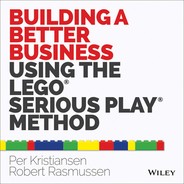Chapter 4
The LEGO® SERIOUS PLAY® Method
The LEGO SERIOUS PLAY method is a regular and systematic way of accomplishing what we have described in previous chapters using the LEGO brick and the serious play concepts as the dominant levers.
As noted earlier, the need that sparked the initial idea for LEGO SERIOUS PLAY did not come from a desire to develop a method that helps groups and individuals think, communicate, and solve problems together—not by any stretch of the imagination. Rather, the impetus was exclusively to use the combination of bricks and playing seriously to help an executive team bring more imagination into their strategy development. Today, we refer to the solution to this particular challenge as the LEGO SERIOUS PLAY Real Time Strategy For the Enterprise application. This is a particular strategy workshop in which the method is applied.
When we look at the LEGO SERIOUS PLAY method, we typically split the definition into three parts:
- It is a systematic set of group dynamic principles.
- It is a set of principles for the systematic use of the LEGO brick.
- It is the systematic use of the LEGO SERIOUS PLAY techniques, which consist of a Core Process and seven Application Techniques (ATs).
The three parts are intertwined and inseparable. Try to use only one of them without the others and it simply won't work—and couldn't be categorized as LEGO SERIOUS PLAY.
The purpose of the group dynamic procedures is to destroy the 20/80 meeting syndrome, a trend we first discussed in Chapter 1. This is a situation where 20 percent of the participants in the meeting use 80 percent of the time to talk about their knowledge and their intentions. The goal with LEGO SERIOUS PLAY is instead to create what we refer to as a 100/100 meeting—one where everyone present feels compelled to bring their insights to the table, and can maximize their confidence and commitment to their fullest potential.
We can summarize the principles for the group dynamic procedures as follows:
- Requiring everyone to participate all the time (100/100)
- Requiring everyone to participate in all the phases of the LEGO SERIOUS PLAY process
- Introducing the LEGO SERIOUS PLAY process in a form that is inclusive for all
- Leading the group as a facilitator, not a consultant, trainer, teacher, or instructor
- Facilitating a 100 percent democratic process
- Giving people time to reflect and gather their thoughts before anyone begins to talk
The purpose of the systematic use of the LEGO brick is to make the models—not any individual present—the center of attention in the meeting. The principles for the systematic use of the LEGO brick are:
- The LEGO brick is used to unlock and construct new knowledge, not to convey someone's answer or knowledge.
- There is no one right way to build with the LEGO bricks.
- Everyone has an obligation to build and the right to tell the story in the LEGO model.
- The builder owns the LEGO model and its story.
- You must accept the builder's meaning and story in the LEGO model.
- Question the LEGO model and its story—not the person.
The LEGO SERIOUS PLAY techniques include a four-step Core Process (see Figure 4.1) and a set of seven clearly defined Application Techniques (Figure 4.2) that are described in the following sections.

Figure 4.1 The Core LEGO SERIOUS PLAY Process
© 2014 Association of Master Trainers.
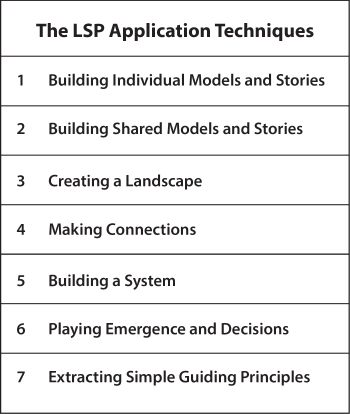
Figure 4.2 The LEGO SERIOUS PLAY Application Techniques
© 2014 Association of Master Trainers.
Let's take a look at each model in detail.
The Core Process
The Core Process is the basic operating system in the LEGO SERIOUS PLAY method. It is the syntax in a language that helps the participants put into words what they know and don't know they know. The questions which are posed in step 1 of the Core Process will determine the content of steps 2, 3, and 4.
Step 2, constructing, is the building and thinking time during which the participants build LEGO models and stories which answer the question that was asked. It is important to note that when building something concrete the participants are also building new insights and connections in their minds (see Chapter 6). Step 3, sharing, naturally follows step 2. Everyone now gets to share their story and model; this version of distributed dialogue ensures that everyone's perspective and insight is shared. The Core Process is completed with step 4, reflecting, where after each story the facilitator and the other participants reflect on what they have heard, and maybe on what they can see in the model but do not understand. Reflecting takes the form of asking questions about what can be seen in the model, what different elements mean.
It's important to note that there are no standard questions in the LEGO SERIOUS PLAY method. The questions the facilitator asks will depend entirely on the issues the group is addressing. All questions are unique to the topics/challenges that people are exploring and dealing with through the use of the method. Both the Core Process and the seven Application Techniques are processes without content—until the facilitator adds content to achieve the desired objectives for the intervention with the LEGO SERIOUS PLAY method.
Combined with the group dynamic principles and LEGO brick principles described earlier, the Core Process's four steps ensure that the LEGO SERIOUS PLAY method always delivers on these objectives:
- Get 100 percent participation from everyone in the group.
- Give all participants time to think before they speak.
- Hear and be able to appreciate every person's unique insight on the issue being discussed.
- Get all participants to step up to the plate and be part of the discussion and decision making.
- Communicate in a way that:
- Helps everyone express his or her thoughts and insights.
- Helps the listener understand and remember what people say.
- Minimizes the risks of misunderstandings and miscommunications.
- Provides equal support for a variety of communication styles (auditory, visual, and kinesthetic).
- Helps all participants focus on the message, not the messenger.
We experienced a breakthrough moment in the development of the LEGO SERIOUS PLAY method when we recognized the importance of the following four factors. Indeed, we've found that they are highly critical for achieving success with the process for the full duration of the workshop, particularly when people experience the method for the first time.
- Factor 1: Each participant must start with a set of bricks identical with everyone else's sets.
- Factor 2: Each participant must begin by constructing his or her own LEGO model and story.
- Factor 3: The participants come to see the brick as a metaphor and not as a metonym. A metaphor is a figure of speech that describes the topic by asserting that it is on some level similar to the object used—for example, the LEGO model—even though they are otherwise very different (e.g., the competition is like a fox, cunning and fast). As mentioned in Chapter 1, a metonym is also a figure of speech, but there the object simply stands in for (represents) the object.
- Factor 4: A 100 percent safe, highly structured, and foolproof hands-on introduction to the Core Process is necessary within the first 45 to 60 minutes of the workshop.
Despite the fact that each LEGO SERIOUS PLAY workshop is unique—that is, it's designed to meet the specific objectives of the intervention—the workshop's introduction always follows the same structure, syntax, and progression to accommodate these four critical factors.
The Seven Application Techniques
Each of the seven Application Techniques (see Figure 4.2) has a specific purpose and function in the LEGO SERIOUS PLAY method, depending on the objectives of the LEGO SERIOUS PLAY workshop.
Here is a short description of each of the seven Application Techniques (ATs).
AT 1: Building Individual Models and Stories
The purpose of AT 1 is for each individual to unlock new knowledge, and subsequently be able to communicate this knowledge to the other people in the group. The goal here is to share the knowledge that's currently only living in his or her mind and get it onto the table where everyone can see it.
The example to the left in Figure 4.3 represents someone's knowledge of trust, whereas the example to the right represents someone's unlocked knowledge about a company's identity, where the core is creative, dynamic, and disorganized and driven by four people of whom two are more dominant. The frame represents an external view of the company as very colorful and very structured.
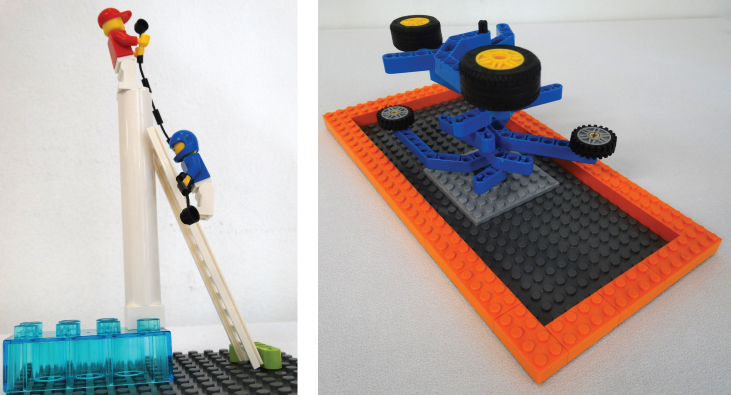
Figure 4.3 AT 1 in Use: Building Individual Models and Stories to Unlock New Knowledge
AT 2: Building Shared Models and Stories
The purpose of AT 2 is for the team to make decisions about shared understanding of a given topic by consolidating a number of individual models of this topic into one shared model. The use of AT 2 is always preceded by the use of AT 1. The example to the left in Figure 4.4 shows the process in play, and the example to the right shows how the group has constructed their shared model (the model in the middle of the table) using components from their individual models (AT 1) unlocking their knowledge about the topic being explored.

Figure 4.4 AT 2 in Use: Building Shared Models and Stories to Reach a Shared Decision
AT 3: Creating a Landscape
The purpose of AT 3 is analyzing, categorizing, and seeing similarities, differences, patterns, and so on among a collection of individual models without losing any original details or meanings. The examples in Figure 4.5 show two uses of this technique to chunk knowledge.

Figure 4.5 AT 3 in Use: Creating a Landscape to Analyze the Variables and See the Bigger Picture
AT 4: Making Connections
The aim here is to identify relationships between the meanings of two previously constructed LEGO models by building a physical link between two or more previously constructed LEGO models (see Figure 4.6). When making connections, the LEGO building material can also be part of the story itself (e.g., the difference between using a chain, string, or tube for the connection).
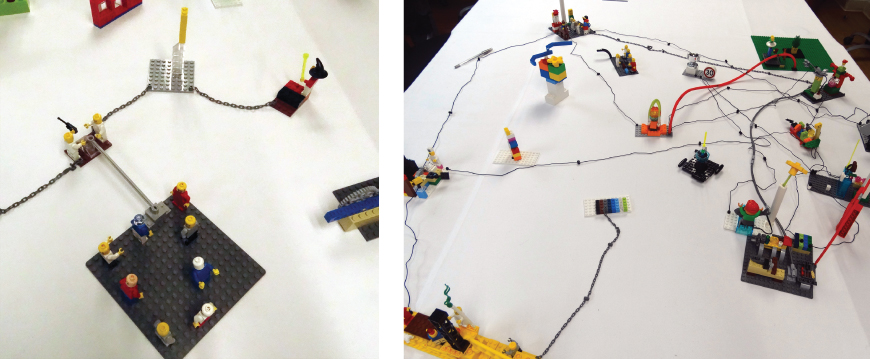
Figure 4.6 AT 4 in Use: Making Connections to Identify the Relationships and Their Characteristics between the Variables
AT 5: Building a System
Here, participants explore and identify systems and their impact. In this way, AT 5 is an extension of AT 4, making connections. When multiple models are connected in such a way that a ripple effect or unforeseen impact might occur, we refer to it as a system. Building a system is a continuation of connections to build the entire web of connections as in Figure 4.7.
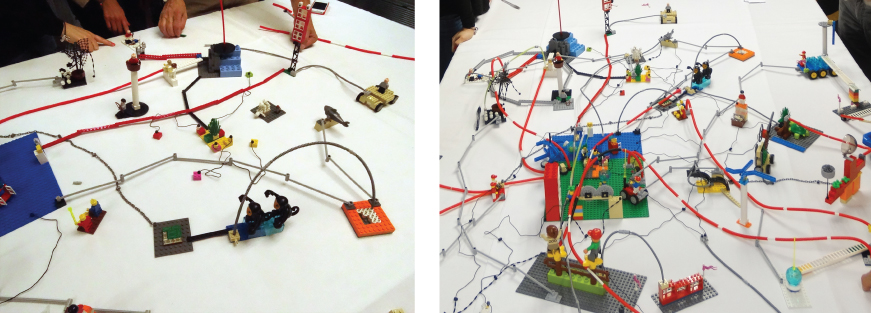
Figure 4.7 AT 5 in Use: Building a System to Map the Complex Web Connecting the Variables
AT 6: Playing Emergence and Decisions
The aim of AT 6 is to strategize—that is, play out scenarios and decisions to explore and probe how the system is impacted by and will respond to multiple unpredictable dynamic events and different choices of strategy. AT 5 is a prerequisite for a rich and full AT 6. In the illustration in Figure 4.8 the group is playing emergence and testing decisions with the previously developed system.

Figure 4.8 AT 6 in Use: Playing Emergence and Testing Decisions to Gain Insights about How the Systems React to Changes and Explore the Impact of Decisions Taken in Response to These Changes in the System
AT 7: Extracting Simple Guiding Principles
Finally, the goal of AT 7 is to develop something we refer to as Simple Guiding Principles. These are developed through the learning and information gleaned from the previous steps, in particular AT 6. The function of Simple Guiding Principles is to support strategic decision making in real time. They emerge as a result of playing with the system in the previous Application Technique.
Something that's essential to note is that one doesn't need to employ the seven Application Techniques in order; that is, it's not a linear process from AT 1 to AT 7. It always begins with AT 1, but from there it can go on to AT 2, or jump to AT 3 or AT 4 as an example.
However, in cases such as AT 6 and AT 7, AT 1 to AT 5 are necessary intermediary steps for the full experience.
In general, while the complexity of the Application Technique increases as you move up or down the scale, so does the value you create in each step.
The Facilitator Traps
LEGO SERIOUS PLAY is a facilitated method; it takes someone to guide the progression, to keep the play serious and risk free, and to ensure progression. Building and telling stories with the LEGO bricks will almost always be fun and enjoyable. However, a trained and skilled facilitator is invaluable to achieve specific business, team, or personal development objectives. Facilitators undergo comprehensive training before they engage in designing and facilitating with end users.
The facilitator's responsibilities are to lead the process while respecting the principles for the group dynamics listed above, the use of the LEGO bricks, and the use of the Core Process and Application Techniques. The facilitators must do this in accordance with the specifications provided to them during their training. The facilitator's role is not to convey an answer or specific knowledge about the complex issue that the workshop participants are trying to deal with. They are simply there to help the participants find the solution within their own system. The facilitators are trained to do this by framing and asking the relevant questions using the Core Process and appropriate Application Techniques.
We have seen many outstanding facilitators during our 12 years with LEGO SERIOUS PLAY; we've also witnessed a few who were less than outstanding. As a result, we began to compile a list of what we call “facilitator traps” several years ago. We've seen the following top five traps emerge over the years.
Trap 1: The Facilitator Becomes a Consultant
It's clear that the facilitator has fallen into this trap when he or she starts drawing the conclusions, giving advice, and taking charge of the meeting. The impact you experience is a group almost immediately falling out of flow.
Trap 2: The Facilitator Forgets What It Is Like When Participants Are Not Yet Familiar with the Process
The LEGO SERIOUS PLAY method is still a highly unusual, counterintuitive, and boundary-breaking experience for most people in the business world. That requires the facilitator to be very careful with the framing and goal setting so it does not become all about the LEGO bricks. Another way of falling into this trap is when the facilitator does not use the so-called skills building (see Chapter 8) in the beginning of the workshop to help the participants familiarize themselves with the method, the bricks, and the use of metaphors.
Trap 3: The Facilitator Comes to the Rescue Too Soon
The LEGO SERIOUS PLAY method is designed to push people out of their comfort zones. Occasionally, participants become (or start out!) frustrated; they're looking for someone to step in and give directions and answers to the challenges they are encountering. It is during these times of frustration that the most powerful learning is happening—so as much as a facilitator might want to, coming to the rescue too soon by taking control and responsibility for finding answers is seldom a good idea.
This could, for example, happen during AT 3 when the participants are creating a landscape out of individual models. At this point the participants often struggle, trying to find an overarching narrative that ties the models together; thus it is tempting for the facilitator to come to the rescue with an observation that would make the placing seem easier.
While it's an easy trap to fall into, it's one that the facilitator should make an effort to avoid, as should leaders in most cases, but that is a different story. What typically happens if a facilitator falls into the trap is that it feels easier for the participants, but less insight is created and the participants are less committed to the result.
Trap 4: The Facilitator Lets the Story Run Away from the LEGO Model
This happens when a facilitator allows participants to go off on tangents about topics not represented in their LEGO construction. Typically, the participant either does a long preamble to the story or continues talking after having shared the story in the model. When continuing, you usually see such participants sit up straighter, then lean back and start looking nowhere in particular; this is when they switch into the standard arguments and pet projects. Very soon the rest of the group will adopt a similar posture; they will lean out, and their attention will be lost. The participants are interested in the new insight; they want to hear the story about the model, not stories about everything else, and the facilitator needs to make this the focus of the workshop.
Trap 5: The Facilitator Does Not Have a Plan B
As previously discussed, the LEGO SERIOUS PLAY method is a democratic and participant-driven approach to dealing with complex issues that are real and relevant to everyone in the intervention workshop. It therefore empowers people when they're able to think, communicate, and express themselves. However, when you put such forces into motion, the result can be different from your predictions. One can never predict exactly what will come out in a building round, whether individual or shared; surprising new insights may emerge, or perhaps the shared model building reveals that there are two very different understandings of the same thing. In other cases the stories from one round make it clear that instead of talking about customers, for example, what is needed is to explore the organizational competencies.
Thus, the LEGO SERIOUS PLAY method not only requires a well-thought-out process flow, but it also requires the facilitator to heed the need for modifications or alterations in the blink of an eye. The facilitator needs as a minimum to know which parts to skip if one part takes longer than expected, or, even better, he or she should have a full plan B ready. A full plan B would be in the form of an alternative road map design, so if X happens, then this is what we will do. The facilitator must also be ready to develop a plan C at the blink of an eye should the workshop turn in an unpredictable direction.
Applying the LEGO SERIOUS PLAY Method
The complex challenges where leaders and teams look to the LEGO SERIOUS PLAY method for help typically fall within one of three domains depicted in Figure 4.9.
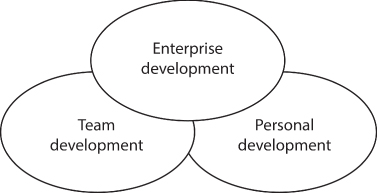
Figure 4.9 Enterprise, Team, or Personal Development
Enterprise development covers a wide range of areas within strategy, business, organizational, innovation, and product development, as well as learning and education. In short, it includes any complex issue that is not focused on either team or personal development. The overlapping of the ovals indicates that there is always some level of both team and personal development taking place whenever you apply the LEGO SERIOUS PLAY method for a group.
We deliberately use the term development in all three areas. Earlier in this section we described the three core needs we are addressing with the LEGO SERIOUS PLAY method, shown again in Figure 4.10.

Figure 4.10 The Essential Purpose of the LEGO SERIOUS PLAY Method
The common denominator for all three needs is the desire to use our imaginations to first visualize and then reach a state that is different from the current state. That might involve developing a new strategy, a better business model, a set of new cultural values, a new vision, a more effective team, or a more innovative culture. We refer to this journey as getting from A, the current state, to B, the new state.
We mentioned earlier that the LEGO SERIOUS PLAY method is for courageous leaders in organizations and groups that are facing a complex challenge. One way of defining complexity in this instance is that it involves multiple stakeholders operating in a dynamic environment with a certain level of unpredictability. It is a situation that makes it impossible to move from A to B in a straight line, as shown in Figure 4.11 by path 1 from A to B. For example, when a department wants to work from the current value proposition to a new one, a number of stakeholders and their various wishes and agendas may impact the path.

Figure 4.11 Three Possible Ways of Getting from Your Starting Point to Your Goal
Some of the courageous leaders who opt to utilize the LEGO SERIOUS PLAY method have experienced the difficulty of trying to move in a linear sequence (path 1). Attempting to solve an issue based on the assumption that they can make a detailed plan for getting from A to B can introduce obstacles. Often, it results in never getting to B at all (path 2); this could be because the system responds completely differently from what was expected and in a nonlinear way, and this was never tested. Or perhaps a particular stakeholder had not been heeded.
In contrast, we see how the LEGO SERIOUS PLAY method deals with complex issues in path 3. Leaders who undertake this method accept that getting from A to B will be a zigzagging process—one that can be successful only if you are able to get everyone involved, unlock tacit and new knowledge, and break habitual thinking.
Later in the book we will walk you through a number of actual case examples where LEGO SERIOUS PLAY has been applied to enterprise, team, or personal development. But before we do that, we will contemplate the LEGO SERIOUS PLAY etiquette and then step back and take you through some of the scientific theories that underpin the methodology.
